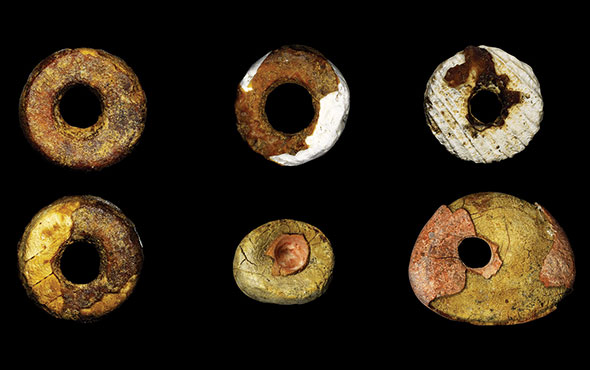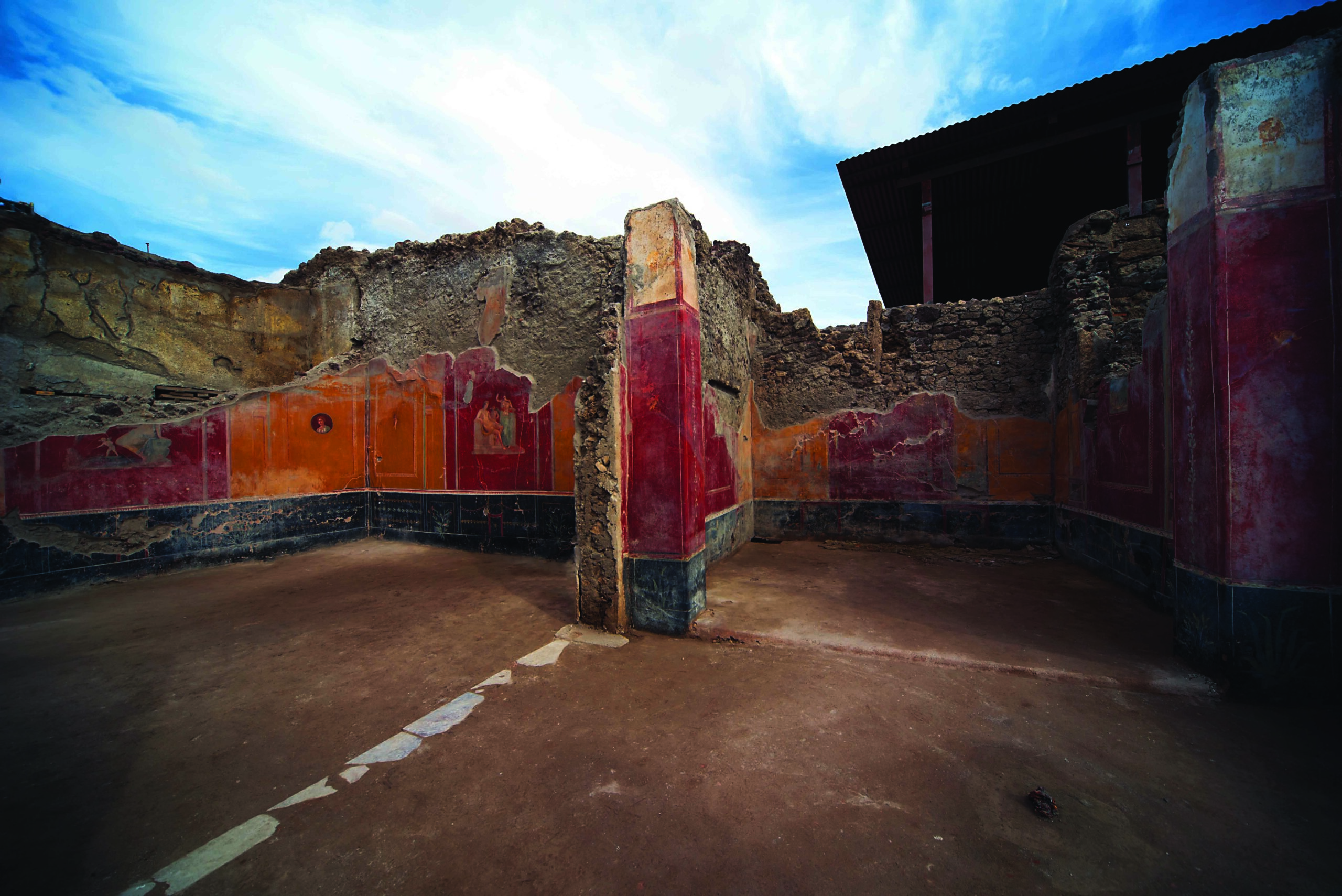HALLE, GERMANY—According to a report in The Art Newspaper, conservators have determined that a fragment of a painted wooden warrior’s shield discovered in a Germanic chief’s tomb in central Germany is 1,700 years old. Conservator Christian-Heinrich Wunderlich of the Landesmuseum in Halle said microscopic examination of the wood fragment revealed that the surface had been prepared with chalk and lime to create a smooth surface for layers of paint such as “Egyptian blue,” which was widely available in the Roman Empire, and vermillion, which was only available in a few places in the Mediterranean. “These pigments were not cheap and must have been Roman imports,” Wunderlich said. The shield would have measured about four feet across, and was probably painted on both sides, he added. The chief’s tomb also contained a gold neck ring and brooch, silver belts, spurs, a knife, coins, arrowheads, drinking glasses, a bronze vessel for mixing wine, and a bronze stool. Wunderlich explained that some of these objects may have been received as payment from the Romans for acting as a mercenary or conducting a looting expedition, while other items are thought to have been made in Scandinavia. To read about the Roman conquest of Germany, go to "The Road Almost Taken."
Germanic Warrior’s Wooden Shield Conserved
News September 18, 2019
Recommended Articles
Digs & Discoveries September/October 2025
Good Night, Sweet Prince

Digs & Discoveries July/August 2025
Saints Alive

Digs & Discoveries July/August 2025
Soldiers of Ill Fortune

Top 10 Discoveries of 2024 January/February 2025
Reindeer Hunters’ Wall
Bay of Mecklenburg, Baltic Sea

-
Features July/August 2019
Place of the Loyal Samurai
On the beaches and in the caves of a small Micronesian island, archaeologists have identified evocative evidence of one of WWII’s most brutal battles
 (Courtesy Neil Price)
(Courtesy Neil Price) -
Letter from England July/August 2019
Building a Road Through History
6,000 years of life on the Cambridgeshire landscape has been revealed by a massive infrastructure project
 (Highways England, courtesy of MOLA Headland Infrastructure)
(Highways England, courtesy of MOLA Headland Infrastructure) -
Artifacts July/August 2019
Bronze Age Beads
 (Courtesy Carlos Odriozola)
(Courtesy Carlos Odriozola) -
Digs & Discoveries July/August 2019
You Say What You Eat
 (Courtesy David Frayer, University of Kansas)
(Courtesy David Frayer, University of Kansas)


